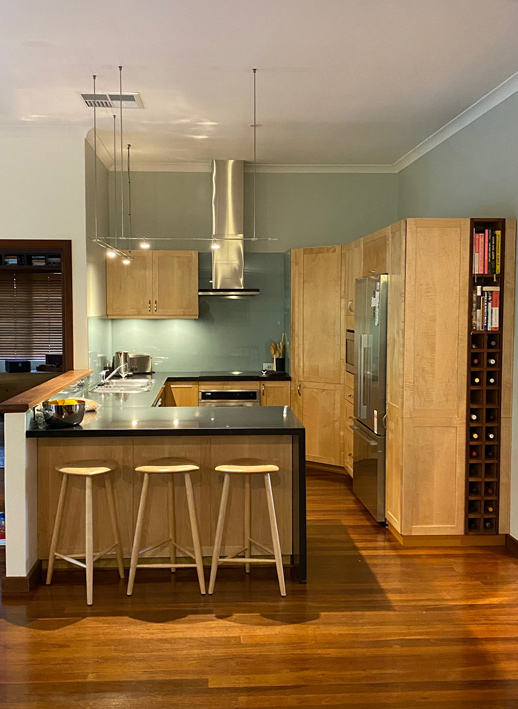Note: I see that my post has gotten long-winded. Scroll down to the bold-faced question below. That sums it up nicely.
I am in the process of refacing my kitchen. I am building all new cabinet doors and drawer fronts. Also new end panels. I am painting the face frames and toe kicks only (no interior painting).
I’m about half way done. Doing a few cabinets each week. My 74 year old back complains about working on my hands and knees for the base cabinets and also for working off a ladder for the uppers. So that is the limiting factor.
However, the other day I was reading an “Apartment Therapy” e-magazine and they defined refacing as “new cabinet doors and drawers”.
Question: Is it conventional to replace the drawers as well as the drawer fronts when refacing a kitchen? I was not planning on that.
Also, I am switching from 1/2” overlay to 1” overlay for a more contemporary look. Because of that, I am replacing all the standard close hinges with soft close hinges.
I was not planning on soft close drawers, however.
All this in anticipation of selling my house in about 5 years.
I have read that refacing kitchens has a high R.O.I. (Return On Investment). Are soft close drawers also a high R.O.I.? My back would not be happy doing that work. (Making new drawers would be easy, however.)
I am in the process of refacing my kitchen. I am building all new cabinet doors and drawer fronts. Also new end panels. I am painting the face frames and toe kicks only (no interior painting).
I’m about half way done. Doing a few cabinets each week. My 74 year old back complains about working on my hands and knees for the base cabinets and also for working off a ladder for the uppers. So that is the limiting factor.
However, the other day I was reading an “Apartment Therapy” e-magazine and they defined refacing as “new cabinet doors and drawers”.
Question: Is it conventional to replace the drawers as well as the drawer fronts when refacing a kitchen? I was not planning on that.
Also, I am switching from 1/2” overlay to 1” overlay for a more contemporary look. Because of that, I am replacing all the standard close hinges with soft close hinges.
I was not planning on soft close drawers, however.
All this in anticipation of selling my house in about 5 years.
I have read that refacing kitchens has a high R.O.I. (Return On Investment). Are soft close drawers also a high R.O.I.? My back would not be happy doing that work. (Making new drawers would be easy, however.)




